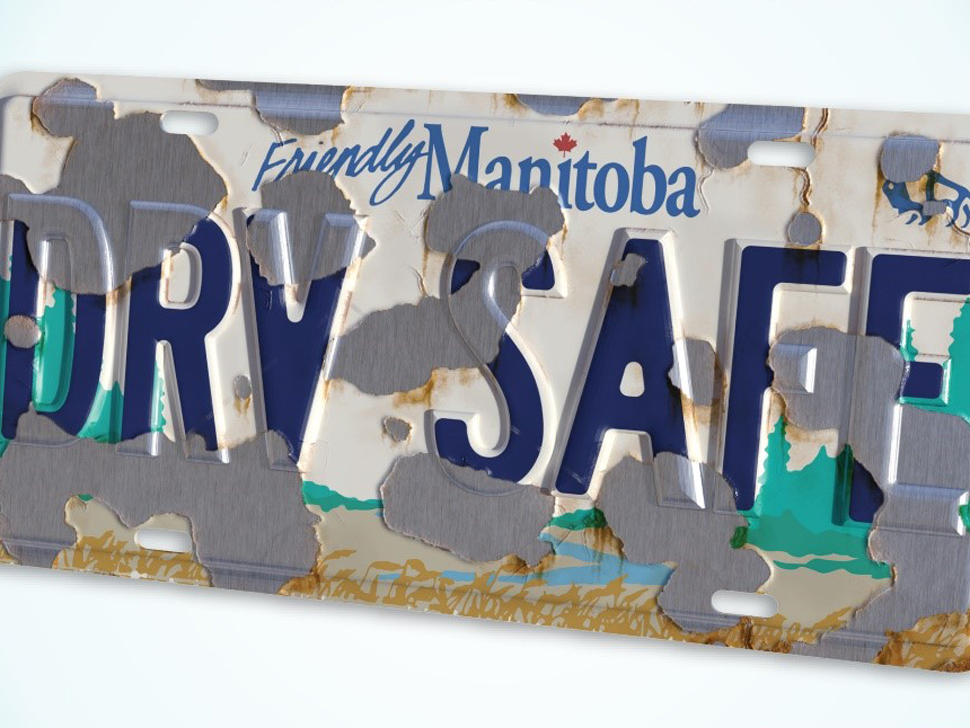Manitoba Public Insurance (MPI) is reminding motorists to replace their license plates if the letters or numbers are peeling.
Tara Seel is Media and Public Relations Lead. She says once the numbers or the reflective coating begins to peel off plates, they create safety concerns for all road users, including law enforcement.
"Traffic stops are dangerous in and of themselves," notes Seel. "They now have to approach a vehicle when they are not able to read that license plate and have a little bit of information to go in with."
Seel says when plates are unreadable, dangerous driving behaviours can go unchecked, posing a risk to all Manitobans. She adds night driving becomes more dangerous if a license plate does not have the reflective quality, because the reflection with the headlights allows motorists to see other vehicles better in the dark.
"Especially if a vehicle is parked on the side of the road, the reflectivity of the license plate alerts us to their presence if lights might not be on," she explains.
License plates have warranty
Seel says this is really a very easy problem to fix. She notes replacing the plates can be done at any Manitoba broker or MPI service centre. MPI has a five-year warranty on new license plates and will replace them at no cost to the customer if they begin to degrade during that time period. After five years, the customer is responsible for replacing their license plates at a cost of $15 per pair.
But Seel says MPI wants to be reasonable and work with its customers. She notes that when you take the plate into the broker or service centre, they will assess the plate and determine if the fee is waived or not. For example, even if it is within five years, if the plate is clearly damaged as the result of a collision, the customer will probably be expected to pay the replacement cost.
"The warranty doesn't last for everything, especially when you consider the amount of times somebody washes their car and really scrubs their license plate hard," she explains. "Things like that could shorten the life of a plate; we're just not responsible for that for the lifetime of the plate."
Peeling not new to plates
According to Seel, peeling license plates is not a new concept. She notes our license plates have extreme fluctuations in temperature to contend with, as well as sand and salt that can weaken the integrity of the license plate coating. In addition to that, hitting a snowbank with your license plate can also cause reflective coating to crack.
The Drivers and Vehicles Act (DVA) states that license plates must be unobstructed and maintained in a condition where all information is clearly visible. A driver could face a fine of $113 if caught with a poorly maintained plate.
Seel says many motorists have gone to great lengths to try repairing their license plates. She notes some have used blue nail polish, paint, and even Sharpie pens to try and draw the numbers and letters back on.
"While we very much appreciate the effort at maintaining the readability of the plate, unfortunately, those methods don't work and the plates do need to be replaced so that they have that proper reflectivity and readability," she warns.
Meanwhile, Seel acknowledges that many people are attached to their license plate, either because they have the number memorized or maybe because it has special meaning. She notes that if you have a specialty plate, then the replacement fee is higher, and you can request the same number. However, if it is just a regular Manitoba license plate, Seel says MPI will not give motorists the same number when replacing.
